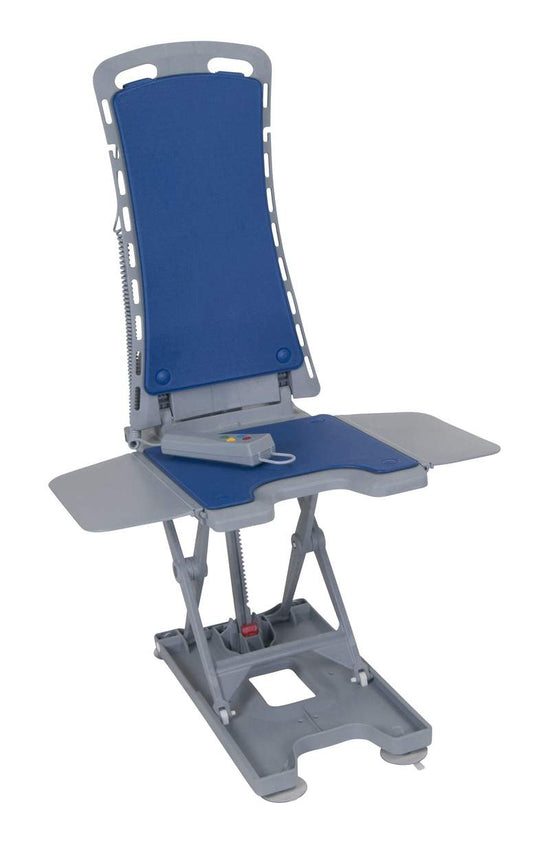Hospital stays can be a tough experience for patients. Dealing with illness and trying to recover is hard enough, but it is often worsened by an uncomfortable hospital bed. A comfortable bed is crucial to helping patients recover faster, reduce pain, and improve their overall well-being.
A comfortable hospital bed mattress can go a long way toward improving the patient's comfort level, which is why it’s essential to find the right one. In this blog, we’ll provide a complete guide to help you find the most comfortable hospital bed mattress. From the different types of mattresses to consider to the factors that influence your decision, we’ll cover everything you need to know to make the right choice for you or your loved one.
Importance of a comfortable hospital bed mattress
A comfortable hospital bed mattress is crucial for the overall well-being of a patient. A good mattress can offer adequate support to the body, reduce pressure points, prevent bedsores, improve blood circulation, and reduce the risk of falls.
It can also help the patient to have a restful sleep, which is essential for the healing process. Studies have shown that the quality of sleep in a hospital setting can affect the patient's mood, pain perception, and overall recovery time.
Therefore, it's important to prioritize the comfort of the patient by investing in a high-quality hospital bed mattress. By doing so, patients are more likely to recover faster and have a better hospital experience.
Factors to consider when choosing a hospital bed mattress
When choosing a hospital bed mattress, it's essential to consider various factors to ensure that you get the most comfortable one for the patient's needs. Here are some critical factors to keep in mind:
- Material: Consider the material used to make the mattress. Foam, air, and innerspring are the most common materials used.
- Firmness: The mattress should have the right level of firmness to offer adequate support and comfort. This can vary depending on the patient's condition and preference.
- Size: Ensure that you choose the right size to fit the hospital bed and meet the patient's needs.
- Weight capacity: Check the mattress's weight capacity to ensure that it can accommodate the patient's weight without compromising its comfort and support.
- Pressure relief: The mattress should provide pressure relief to prevent bedsores and improve blood circulation.
- Maintenance: Consider the maintenance requirements of the mattress, such as cleaning and rotating it to ensure that it remains comfortable and durable.
By considering these factors, you can find the most comfortable hospital bed mattress that meets the patient's specific needs and provides the necessary comfort and support for a better hospital stay.
How to maintain and clean your hospital bed mattress
Proper maintenance and cleaning of a hospital bed mattress are essential to keep it comfortable, hygienic, and durable. Here are some tips on how to maintain and clean your hospital bed mattress:
- Inspect the mattress regularly: Check the mattress for signs of damage, wear and tear, or stains. Promptly replace the mattress if you notice any significant issues.
- Rotate or flip the mattress: Depending on the type of mattress, it's essential to rotate or flip it regularly to prevent wear and provide even support.
- Use a mattress cover: Invest in a waterproof, breathable mattress cover to protect the mattress from spills, odors, and stains. The cover should be machine washable and easy to clean.
- Clean the mattress regularly: Depending on the type of mattress, clean it regularly using mild detergent and warm water. Follow the manufacturer's instructions for cleaning and avoiding excess moisture in the mattress.
- Disinfect the mattress when necessary: If the mattress has been exposed to bodily fluids or germs, disinfect it using a hospital-grade disinfectant. Follow the manufacturer's instructions for disinfecting the mattress.
Finding the most comfortable hospital bed mattress
To find the most comfortable hospital bed mattress, it's crucial to understand the different models of hospital beds and mattresses available in the market. There are various models and brands of hospital bed mattresses, and each has its unique features and benefits that cater to specific needs.
Depending on the patient's medical condition, sleeping position, and personal preference, you can choose from popular models like foam mattresses, innerspring mattresses, air-pressured mattresses, and more. In the following section, we'll take a closer look at each model and its suitability for various conditions to help you choose the most comfortable hospital bed mattress for your or your loved one's needs.
1. Cellulose Fiber Mattress
Cellulose Fiber Mattress offers maximum comfort and support for patients recovering from illness or injury. Made from soft, hypoallergenic, and breathable material, it provides premium pressure relief and is suitable for various medical conditions. Available in different sizes, it's an excellent investment for hospitals, nursing homes, and home care settings.

2. Inner Spring Mattress
80" x 36" Inner Spring Mattress provides firm support for bedridden patients, minimizing pressure points and reducing the risk of bedsores. Its lightweight, durable construction makes it an ideal option for medical facilities and home care settings, providing optimal patient comfort and support.

3. Ortho-Coil Super-Firm Support Innerspring Mattress
Ortho-Coil Super-Firm Support Innerspring Mattress provides exceptional firm support and hypoallergenic comfort for bedridden patients. Measuring 80", it reduces pressure points and minimizes the risk of bedsores, making it an ideal choice for hospitals, nursing homes, and home care settings.

4. Bariatric Foam Mattress
Bariatric Foam Mattress is specially designed for exceptional support and comfort for bariatric patients. Measuring 42" W x 80" L, it features high-density foam that distributes weight evenly, reducing pressure points. The waterproof cover is easy to clean, making it a great choice for hospitals and home care settings.

Frequently asked questions about hospital bed mattresses
What type of mattress is best for a bedridden patient?
A pressure-relieving mattress, like a foam or air-pressured mattress, is best for a bedridden patient. It reduces the risk of bedsores and provides maximum comfort.
How often should a hospital bed mattress be replaced?
A hospital bed mattress should be replaced every 5-7 years. However, it's essential to check the mattress for any signs of damage or wear and replace it sooner if necessary.
Can I use a regular mattress on a hospital bed?
No, regular mattresses are not designed to fit a hospital bed's frame and may affect the patient's comfort and safety. It's essential to use a hospital bed mattress for optimal support and comfort.
What's the difference between a foam mattress and an innerspring mattress?
Foam mattresses contour to the body's curves, reducing pressure points and providing maximum comfort. In contrast, innerspring mattresses have a firmer surface and offer more support for patients who require extra firmness.
What is a low-air loss mattress?
A low air loss mattress is an air-pressured mattress that helps to prevent bedsores by reducing the pressure on the skin's surface. The mattress has tiny air holes that allow air to circulate, keeping the patient comfortable and dry.
Can a hospital bed mattress be washed?
Hospital bed mattresses with waterproof covers can be cleaned with mild soap and water or a disinfectant solution. However, it's essential to read the manufacturer's instructions for specific cleaning recommendations.
Can I use an electric blanket with a hospital bed mattress?
It's not recommended to use an electric blanket with a hospital bed mattress as it may affect the mattress's performance and increase the risk of fire. Only use products specifically designed for hospital bed use.




